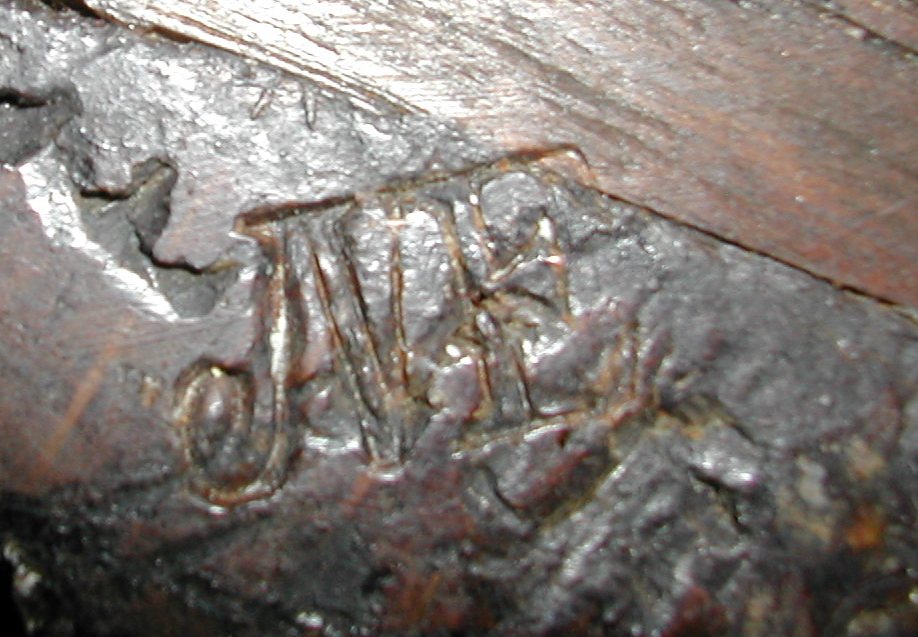
What is the real meaning of the stamp on XVIIIth century pieces of furniture?
From 1637 the obligation is done for each Master to "mark of his particular brand" all their works.
The stamp is the “signature” of a piece of furniture. It is the master’s mark which is branded into the structure of the piece with a hot iron. The brand has the initials and family name of the master, in capital letters.
It seems that the origin of the mark must be sought in the will of master cabinetmakers to personalize their products, and better enforce their right. In addition, the affixing of the mark was a rough and ready way of advertising.
The stamp was associated with the guild system that existed at that time. The elaboration of a piece of furniture was a complex process since it involved the collaboration of several artisans, each of which belonged to his own guild, all governed by very strict rules. The executor, who was often the creator, was an ebeniste. The other artisans worked under his supervision, like the sculptor, the engraver, the caster, the gilder, the metal worker, etc.. The cabinet makers’ guild had well defined statutes. The training was the same for everyone. Aspiring master cabinet makers began as apprentices in a workshop where they would stay for several years until they presented their best piece to the “Jurande”. The “Jurande” was a very powerful organ within the guild whose role was to evaluate the candidates to master cabinet makers, as well as the quality of their work. The approved works were stamped with the letters JME (Jurande des Menusiers Ebenistes), a jury of cabinet makers. After 1743 the stamp became obligatory, a rule that was strictly followed in Paris until 1790, when guilds were abolished.
This corporative system fuelled a real “politics of marriages” so that workshops would remain in the family, and resulted in the rise of artisan “dynasties”.
The stamps come in different sizes and several kinds. They may appear as follows:
- No initial
- Initial
- With two initials
- With lilies
- Framed
- Circulars
- On two lines
With appointment of place: Nogaret à Lyon.
- Handwritten in ink or on label inside tie belt.
- On the back posts on the back.
- Under the rear cross seat. (View with the chair upside down)
- On the cross reinforcement of the seat (not visible when the seat is trimmed)
- On the rear cross frame caned.
- On the face of the rear cross
On a set of seats, some may not be marked.
- Multiple Stamps. A bad hit and the carpenter would renewed his mark at the same place or nearby.
- Two different carpenters stamp: one that manufactures and the other that sells: carpenter shop.
THE JME STAMP

On August 20, 1751 the French parliament voted for the constitution of the Jurande.
An additional stamp, JME (for jurande des menuisiers-ébénistes (translation Cabinet Makers & Carpenters)) would be added once a committee, made up of elected guild members who inspected the workshops four times a year, had approved the quality. Any furniture that failed to meet the required standards of craftsmanship was confiscated.
The Corporation des Menuisiers was divided into two distinct trades, that of the woodworkers who made paneling (boiserie) for buildings and coaches, and that of the actual furniture makers. The latter can be subdivided into menuisiers (joiners), responsible for the making of solid wood furniture such as console tables, beds, and chairs, and the ébénistes, from the word ébéne (ebony), makers of veneered case pieces.
CASTLES MARK and STAMPS
Besides the stamp, there are ink or fire marks. They are castles's initials with or without inventory numbers.
"F": Fontainebleau.
"A": Rambouillet.
"Th": the Tuileries
